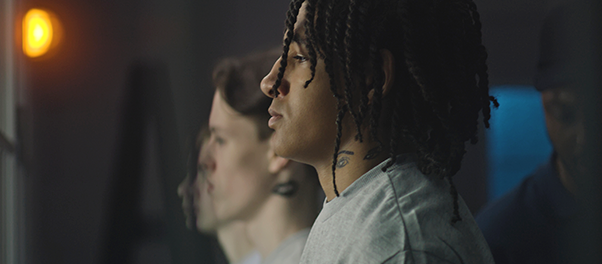Supreme Court Cases
The Supreme Court has ruled on JLWOP in several landmark cases, including:
- Roper v. Simmons (2005): The Eighth Amendment prohibits sentencing juveniles to death for crimes committed before age 18.
- Graham v. Florida (2010): Abolished mandatory JLWOP sentences for non-homicide crimes.
- Miller v. Alabama (2012): Mandatory JLWOP sentences were unconstitutional, cruel, and unusual punishment. Judges had to consider a juvenile's age, home environment and rehabilitation, peer influence and extent of involvement in the crime, and other considerations when deciding on punishment.
- Montgomery v. Louisiana (2016): The decision in Miller v. Alabama should be applied retroactively.
These foundational SCOTUS cases have highlighted developmental differences between juveniles and adults. This implies that juveniles are less capable of making mature decisions and are more susceptible to their behavioral impulses without appreciating the consequences. All of these cases emphasize the potential for youth rehabilitation. They are against the harshness of JLWOP, arguing that such sentences fail to account for the immaturity and potential for change in young offenders.
Child Rearing
The upbringing of children sentenced to life as a juvenile varies. However, they are often unstable, marked by difficult upbringing with exposure to violence, and frequently were victims of abuse themselves. In the landmark case of Miller v. Alabama, Justice Kagan emphasized the failure of mandatory sentencing laws to consider such detrimental backgrounds. Both Kuntrell Jackson and Evan Miller, central figures in the case, were 14 years old during their respective offenses and experienced severe family dysfunction. Evan Miller had attempted suicide multiple times from a young age, reflecting profound distress. Moreover, Kuntrell Jackson was raised in a household rife with violence and frequent family members incarcerated due to violent crimes. Graham v. Florida also illustrates this concern as Terrance Graham’s parents struggled with crack cocaine addiction.
A 2012 survey by The Sentencing Project on juveniles sentenced to life without parole mirrored these individual stories, revealing widespread exposure to domestic violence, physical and sexual abuse, and instability:
- 79% had witnessed regular violence at home.
- 32% were raised in public housing.
- Less than 50% were enrolled in school.
- Almost 50% reported being physically abused.
- Among females, 80% experienced physical abuse, and 77% endured sexual abuse.
Racial Disparities in Juvenile Life Without Parole Sentences
Racial disparities are evident in the application of JLWOP sentence, as data shows that 62% of individuals serving JLWOP are Black, which is disproportionately high. Specifically, while Black juveniles represent 23% of those arrested for murders involving a White victim, they constitute 42% of those receiving JLWOP for such crimes. Conversely, White juveniles convicted of murdering Black victims receive JLWOP at a much lower rate, significantly less than their proportion of arrests for such crimes.
Economic Implications of Life Sentences
The financial ramifications of life sentences are considerable when applied to juveniles. Incarcerating a juvenile for life means potentially decades of state expenditure, with annual costs averaging over $33,000 per inmate. This figure doubles for inmates over the age of 50, making the total cost for a 50-year sentence for a 16-year-old potentially exceed $2.25 million.
Supporting Mental Health and Rehabilitation
If you’re passionate about enhancing mental health for young people in the juvenile justice system, consider these careers:
- Youth Correctional Counselor: Provide individualized counseling to help youth address emotional trauma and behavioral issues.
- Juvenile Justice Social Worker: Connect youth with essential mental health services and family support, ensuring they receive appropriate treatment.
- Juvenile Justice Case Manager: Oversee rehabilitation plans, coordinating with mental health professionals to provide therapy and life skills programs.
- Mental Health Counselor or Psychologist: Offer therapy and psychological assessments, focusing on trauma-informed care for issues like PTSD and anxiety.
- Substance Abuse Counselor: Support youth in overcoming addiction through therapy and relapse prevention strategies.
- Juvenile-Focused Forensic Psychologist: Conduct evaluations and provide insights on the mental health needs of juvenile offenders for legal purposes.
- Education Specialist: Deliver educational services in detention centers, integrating mental health awareness and emotional support into learning.
Reform Momentum
Recent reforms have prompted a shift towards more individualized reviews of juvenile cases, often within 10 to 15 years of incarceration, providing opportunities to consider each defendant's unique circumstances. Advocacy and policy changes continue to push for maximum sentences that reflect the capacity for rehabilitation, with many states extending eligibility for parole review or sentence reconsideration to those convicted as juveniles.
If you're interested in advocating for juvenile justice reform or learning more about this area, several organizations play a key role in this field:
- The Sentencing Project advocates for decreased youth incarceration rates and improvements to the juvenile justice system. It focuses on various issues, including transforming juvenile probation into more effective, developmentally appropriate interventions (The Sentencing Project).
- The Center for Juvenile Justice Reform at Georgetown University offers support through leadership programs and research aimed at reforming juvenile justice and related systems of care. It also provides certificate programs and training focused on improving outcomes for young people (Center for Juvenile Justice Reform).
- Juvenile Law Center is based in Philadelphia and utilizes advocacy and legal action to address issues faced by children in the justice system. Its Youth Advocacy Program trains young people to lead policy reform efforts locally and nationally (Juvenile Law Center).
- The National Institute for Criminal Justice Reform (NICJR) provides technical assistance, consulting, and advocacy to reduce incarceration and improve the outcomes for system-involved youth. Their work includes training and resource provision for organizations engaged in juvenile and criminal justice reform (NICJR).
- The Annie E. Casey Foundation focuses on developing practical, community-based responses to juvenile justice that emphasize positive development and minimize youth incarceration (The Annie E. Casey Foundation).
Additional Resources:
Blog Post
- Unlocking Wellness Behind the Bars: Illuminating the Struggles and Triumphs of Mental Health in Prisons
- Destigmatizing Mental Health in Prisons
Research
- Mental Health’s Role in Juvenile Justice Rehabilitation
- Translating risk factors into treatment needs for juveniles with sex offenses
Training
- AAFP: Evaluating Youth Facing Long-Term Sentences in Adult Court
- Evaluations for High Stakes Sentencing: Capital and Juvenile Murder Cases
Podcast






















